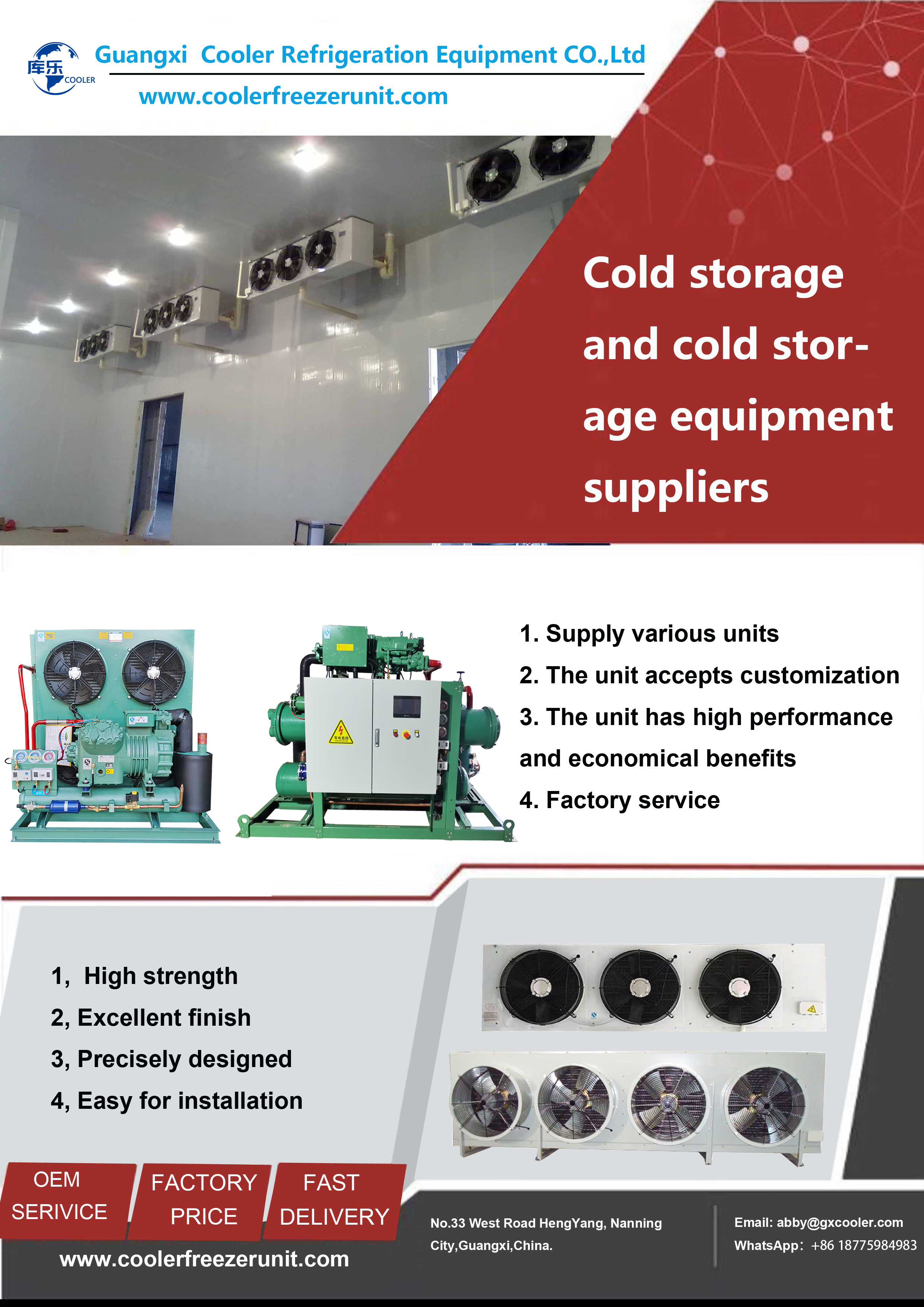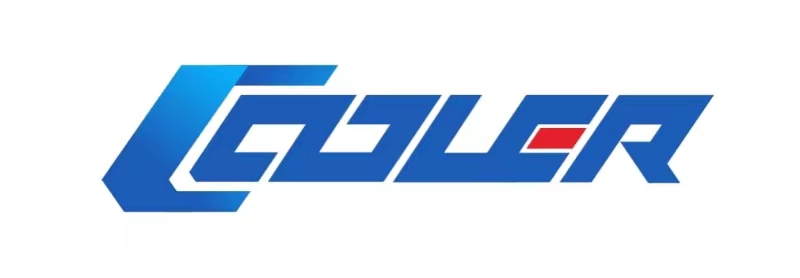1.Cold Storage Cooling capacity acounted
The cold Cooling capacity of the cold storage can calculate the cooling consumption of the cold storage, and the most basic conditions that need to be provided:
Product
The cold storage size ( length * width * height)
Cold storage capacity
Purchase volume: T/D
Cooling time: hours
Incoming temperature, °C;
outgoing temperature, °C.
According to experience, according to the size of the cold storage, it is divided into two situations:
The estimation of the cooling load of the small cold storage (below 400m3).
The estimation of the cooling load of the large cold storage (above 400m3).
Estimated cooling load of small cold storage (below 400m3):
Storage temperature above 0℃, evaporation temperature -10℃, 50~120W/m3;
Storage temperature -18℃, evaporation temperature -28℃, 50~110W/m3;
Storage temperature -25℃, evaporation temperature -33℃, 50~100W/m3;
The storage temperature is -35°C, the evaporation temperature is -43°C, 1 ton occupies an area of 7m2, and the cooling consumption is 5KW/ton*day; the smaller the cold storage, the greater the cooling consumption per unit volume.
Estimated cooling load of large cold storage (above 400m3):
Therer are two sample for your reference:
Storage temperature 0~4℃, evaporation temperature -10℃
By default the following parameters:
Name of goods: fruits and vegetables;
Storage capacity (tons): 0.3*0.55*storage volume m3;
Purchase volume 8%;
Cooling time 24 hours;
Incoming temperature: 25 ℃;
Shipping temperature: 2℃.
In the default parameters, the mechanical load of the medium temperature warehouse: 25 ~ 40W/m3; typical configuration: 4 cold rooms; 90HP parallel unit with a medium temperature warehouse 1000㎡*4.5m high.
·
Cooling temperature -18℃, evaporation temperature -28℃
By default the following parameters:
Name of goods: frozen meat;
Storage capacity (tons): 0.4*0.55*storage volume m3;
Purchase volume, 5%;
24 hours cooling time;
Incoming temperature: -8 ℃;
Shipping temperature: -18℃.
In the default parameters, the mechanical load of the low temperature warehouse is 18-35W/m3; typical configuration: 4 cold warehouses; 90HP low temperature parallel unit with low temperature warehouse 1000㎡*4.5m high. In the default parameters, the mechanical load of the low temperature warehouse: 18 ~ 35W/m3; typical configuration: 4 cold warehouses, screw machine + ECO; 75HP low temperature parallel unit with low temperature warehouse 1000㎡*4.5m high.
Precautions for selection of cold storage equipment: condenser: evaporative cooling when working conditions fluctuate; air cooler: high temperature storage uses low temperature cooling fan, heat exchange, expansion valve;
compressor: low temperature compressor pulls high temperature storage;
hot air melts Frost: quick-freezing warehouse;
water flushing frost: water temperature;
floor antifreeze: ventilation, exhaust steam to heat ethylene glycol.
2. Cooling condensing Unit selection:
1. Single unit and single warehouse: unit cooling capacity = 1.1 × cooling capacity of cold storage; total cooling capacity of the system: the richness factor 1.1-1.15 should be considered.
2. One unit with multiple warehouses: the cooling capacity of the unit = 1.07 × the sum of the cooling capacity of the cold storage; the total cooling capacity of the system: 7% of the pipeline loss should be considered.
3. Parallel unit with multiple cold storages: unit cooling capacity = P × sum of cooling capacity of cold storage;
The total cooling capacity of the system: the pipeline loss of 7% and the warehouse operation coefficient over the same period should be considered.
Necessary conditions for air cooler selection:
The refrigerant;
cold storage temperature;
heat exchange;
The structure of the air cooler;
Cold storage size, air supply distance;
Defrost method.
Necessary conditions for air cooler selection: 1. Refrigerant: Different refrigerants have different heat exchange and pressure resistance. R404a has a larger heat exchange than R22, about 1%. 2. Cold storage temperature: The lower the cold storage temperature, the smaller the heat exchange and the larger the chip spacing. Correctly select the fin spacing of the air cooler: the sum;
The total cooling capacity of the system: the pipeline loss of 7% and the warehouse operation coefficient over the same period should be considered.
3. Heat exchange:
The heat exchange of the air cooler ≥ the cooling consumption of the cold storage * 1.3 (the effect of frost); the nominal heat exchange: the heat exchange in the sample × the actual coefficient; the heat exchange under the design conditions: the nominal exchange Heat × correction coefficient; storage temperature correction coefficient: the lower the temperature of the cold storage, the smaller the heat exchange. Fin material correction factor: material and thickness. Correction coefficient of fin coating: anti-corrosion coating reduces heat exchange; air volume correction coefficient: special requirements for fan.
4. Air cooler structure Ceiling type: commonly used in cold storage;
ceiling type: double air outlet, four air outlet, air conditioner;
floor type: quick freezing room, or air duct refrigeration.
.The size of the cold storage, the air supply distance, and the size of the cold storage, evenly blow the air, and determine the number of cooling fans.
5. The choice of defrosting method of cold storage:
|
COLD STORAGE TEMPERATURE |
DEFROST |
|
+5℃< |
Natural defrosting, |
|
0~4℃ |
electric defrosting, water flushing, |
|
-18℃ |
electric defrosting, water flushing, hot air defrosting |
|
-35℃ |
electric defrosting, water flushing, |

Post time: May-12-2022




